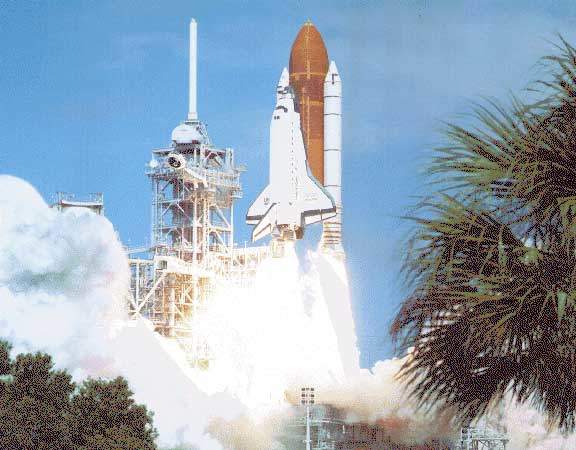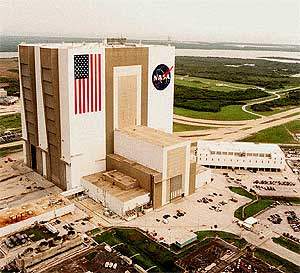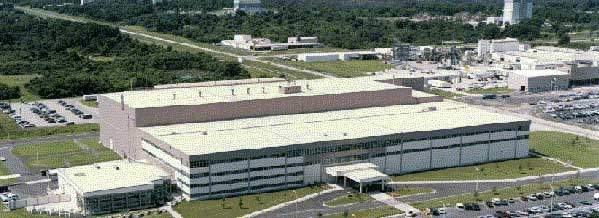The Kennedy Space Center (KSC) is one of the USA’s most visible government installations, handling multiple space shuttle, military and commercial launches with payload values exceeding $1 billion per year. The KSC is located on Florida’s Space Coast and is 55km (34 miles) long from north to south, and 16km (10 miles) across at its widest point. It is the United States of America’s only launch complex for manned operations. KSC houses some of the most unique facilities in the world. Among these is the Space Station Processing Facility (SSPF), which accommodates shuttle payloads for the International Space Station (ISS).
PROJECT TIMESCALE
Construction of the SSPF began in 1991 and was completed in 1995.
INTERNATIONAL SPACE STATION PROCESSING FACILITY (SSPF)
The SSPF is located in the KSC industrial area, just east of the Operation and Checkout Building. The Operations and Checkout Building is a five storey structure containing 600,000ft2 of offices, laboratories, astronaut crew quarters and spacecraft assembly areas.
The three storey SSPF, a 457,000ft2 building, includes two processing bays, an airlock, operational control rooms, laboratories, logistics areas, office space, and a cafeteria. The processing areas, airlock, and laboratories were designed to support non-hazardous station and shuttle payloads in 100,000 class clean work areas.
The SSPF was built specifically to accommodate shuttle payloads for the ISS. Salient features include a 46,000ft2 high bay and a 17,000ft2 low bay for processing ISS elements; 19 off-line labs within the clean work area; air bearing compatible flooring and pallets; air locks and personnel air showers; high communication rate fibre optic LAN; perimeter tunnelling and catwalks to accommodate utilities; and energy efficient, computer controlled air conditioning, heating, and lighting equipment.
Design features include installing standard utility interfaces uniformly throughout the processing and office areas, maximising available floor space by routing cabling, plumbing, and ductwork through tunnels and catwalks, and using air-bearing flooring to permit easy movement of support equipment. Fibre optic LAN optimises communications throughout the office and processing areas. DC-powered, overhead cranes with digital controllers provide position resolution and control for moving and positioning equipment, fixtures, and space station elements.
BRIDGE CRANES
The facility has a number of cranes. The highway is serviced by two 30t overhead, cab-operated bridge cranes, located on a common runway, each with a lifting height of 15.2m (50ft). The intermediate bay area is serviced by two 5t overhead, pendant-operated bridge cranes, located on a common runway, each with a lifting height of 7.6m (25ft). The airlock is serviced by a 15t overhead, pendant-operated bridge crane with a lifting height of 15.2m (50ft). The hardware inspection bay is serviced by a 5t overhead, pendant-operated bridge crane with a lifting height of 7.6m (25ft).
All fans and compressors are internally located at a single, soundproof site to avoid the harsh corrosive environment of the region. In addition, the facility takes into account all EPA regulations in its design.
SSPF ENERGY CONSUMPTION
The SSPF was completed in 1995 and KSC has installed the necessary payload support structures and ground support equipment for the process assembly of the ISS. Dramatic improvements in operational efficiency and flexibility of the SSPF, as compared to other similar facilities, have been achieved. The Energy Use Index already shows a 40% reduction in consumption when compared to other comparable facilities.
CONTRACTORS
Metric Constructors, of Tampa, Florida, was awarded a $56,215,000 contract to construct the SSPF. All cranes are certified and serviced by the McDonnell Douglas Space & Defence Systems Crane Services Group.







